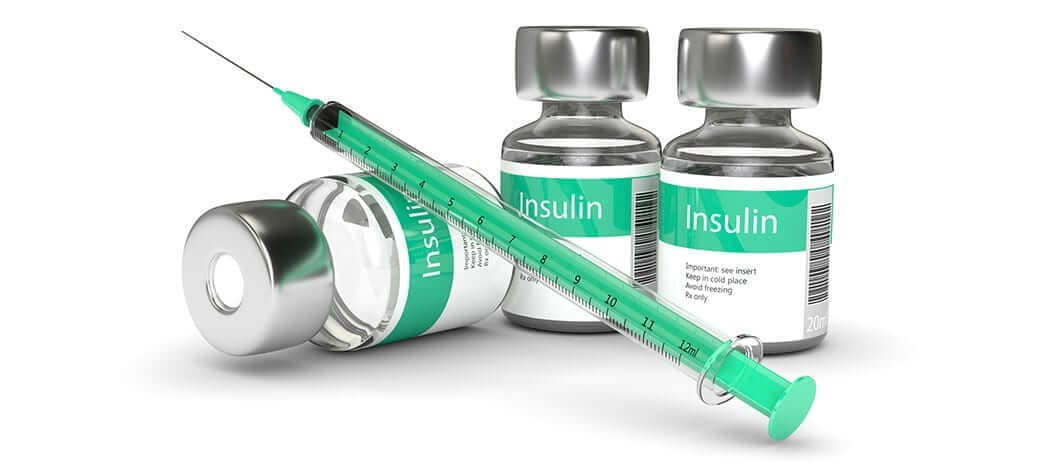I recently got a letter asking me to help choose the best insulin syringe for a pet. So today I’ll first explain the goofy lingo we use to describe insulin syringes and then discuss needles and pens and syringe volume. It’s really quite simple once you break it down. Some of it is critical to proper dosing and some of it is merely personal preference.
What is the Difference Between U-40 and U-100?
U-40 means there are 40 units of insulin per cc. U-100 means there are 100 units of insulin per cc. It refers to concentration of insulin. Remember that one cc (cubic centimeter) equals one ml (milliliter). This is an important aspect of choosing a syringe. If your vet chose U-40 insulin for your pet, you need a U-40 syringe. If you use U-100 insulin you should choose a U-100 syringe. There are conversion tables on the Internet to use one type of syringe with the other type of insulin, but it gets too confusing. I advise against such a mismatch. Mistakes can be made. Dosing errors can be costly or even deadly. Just choose the right syringe for the insulin your vet chooses for your pet.
Regardless of this, syringes can be of different volume. Veterinarians often choose 1/3cc or 1/2cc syringes for our patients as these smaller volume syringes make it much easier for us to see the markings for pets. Pets are usually much smaller than the average human! Sometimes (rarely) we might use 1cc syringes for really big dogs. Let’s use an example: Say you have U-100 insulin and have a really big dog taking 32 units of insulin. A 3/10cc syringe would only allow up to 30 units of U-100 insulin, so you would need a U-100 1/2cc syringe to accommodate that dosage. If you are using U-100 insulin and the dosage is more than 50 units, you would need a syringe that is bigger than 1/2cc.
What is Syringe Volume?
The smaller the volume of the syringe, the wider apart the markings along the side of the syringe can be. It’s easier for us to see the lines! Think of a measuring cup. If you have a one cup measuring cup, the marks for 1/4 and 1/3 and further apart and therefore easier to see than if you have a quart measuring cup. Ages ago, veterinarians often had to dilute out insulin for small pets. With the advent of the small volume syringes this practice is largely a thing of the past. I especially like the syringes with half unit markings which allows for extremely precise measurements for very small pets.
Does Syringe Needle Length Matter?
Needles aren’t quite as important as syringes. Of course the needles are attached to the syringe, but they come in a variety of sizes. They usually come in a very small gauge (meaning the diameter of the barrel of the needle). These needles vary from 28 gauge (downright thin) to 31 gauge (even thinner). The needles come in several lengths as well. I prefer the 1/2 inch length personally. Some folks like the 5/16 length. They are so small it doesn’t much matter.
Can I use Insulin Pens on my Pet?
Pens are becoming very popular in human medicine. It’s easier for people to stick a pen in a pocket or purse with a few replacement needles than to carry a vial of insulin and some syringes. I like pens, too, but for a wholly different reason. Pens are usually 3cc total volume. Vials are usually 10cc volume. Our animal patients don’t usually need much insulin. A lot of insulin goes to waste when we make folks buy a 10cc vial. Say you have a cat who is on one unit of glargine (which is U-100) twice daily. A 10cc vial of U-100 insulin has 1000 units or 500 days worth for that cat taking 1 unit twice daily. The insulin would go outdated long before 500 days. That’s an expensive medicine to throw away. Ouch! If we instead have an owner buy a 3cc pen that’s only 300 doses or 150 days for that particular cat. If folks keep the glargine in the fridge and use good cleanliness, I’m okay using the pen of glargine up to 5 months which means no wasted insulin. I usually joke that I don’t want the pen rolling around the fridge and landing in the butter dish. Keep it by itself, keep the lid on so the port is covered, and use a fresh syringe/needle each time if you wish to use it longer than a month. And of course watch to make sure it doesn’t look cloudy or discolored. If it looks different or if your pet seems less regulated, get a new pen. If you are a millionaire, change the pen monthly.
My beef with pens is that they don’t usually allow half unit dosing. For this reason, I usually instruct people to continue using insulin syringes. I have them screw the tip off the pen and use the pen as they would the vial. Just stick the insulin syringe needle into the rubber part as if it were a vial. If a pet is receiving a whole unit dosing then you can use the needles that come with whatever pen you are using. However, if you want to give a dose that is say 2.5 units you can’t… You have to choose 2 or 3. Most pens don’t usually accommodate this fine tuning for half units.
I hope this has simplified insulin syringes for everyone!
Have a question or comment? Post below or email me at joi.suttondvm@adwdiabetes.com. I always enjoy hearing from my readers!
NOTE: Consult your veterinarian first to make sure my recommendations fit your pets special health needs.







Leave A Comment